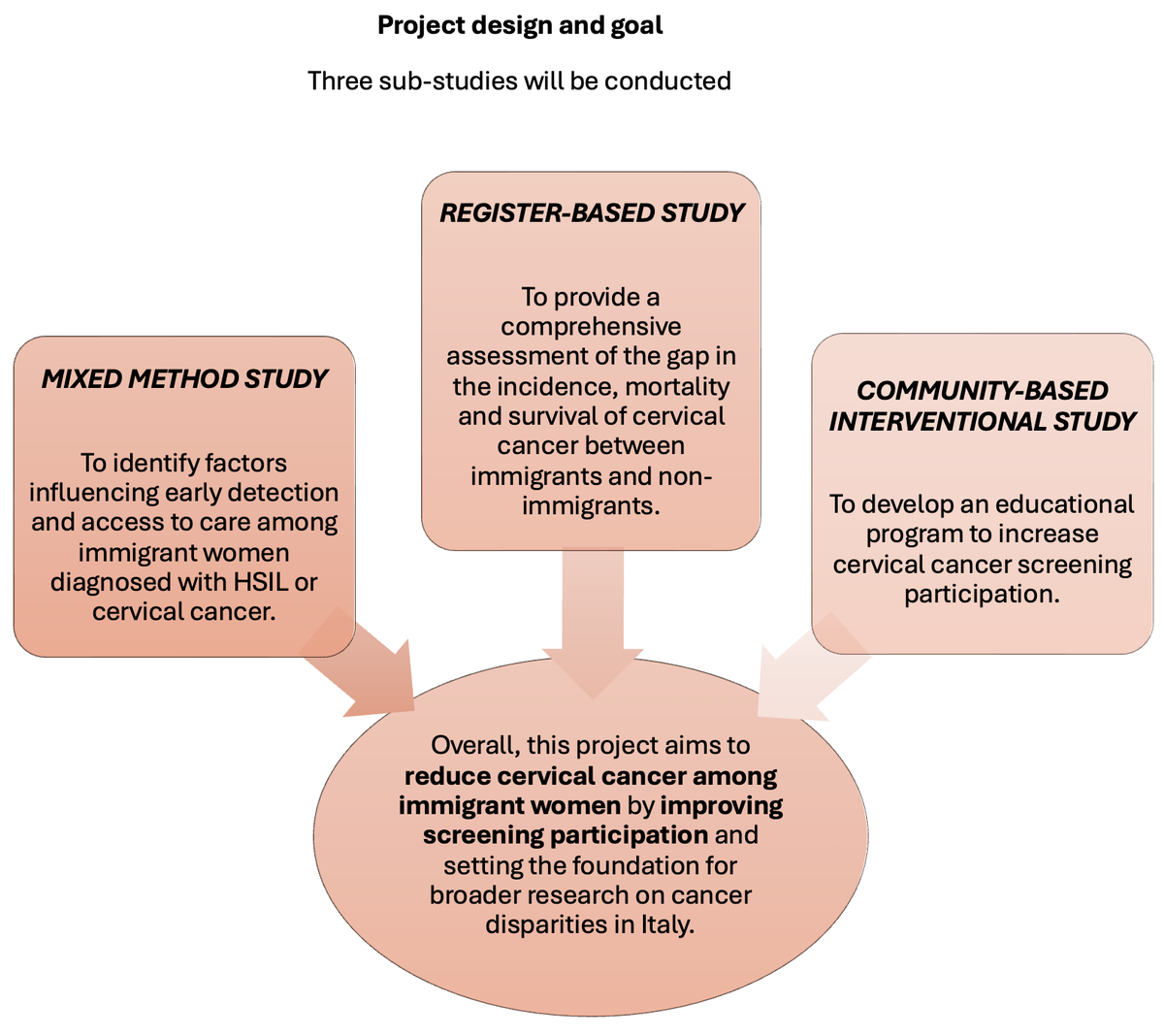PROJECT DESIGN

RATIONAL OF THE PROJECT
Cervical cancer is the fourth most common cancer among women worldwide, with an estimated 2382 new cases in Italy in 2024. Nearly 99% of cases are caused by human papillomavirus (HPV), a sexually transmitted virus. While most HPV infections clear on their own, persistent cases can lead to cancer over time. Thankfully, cervical cancer is largely preventable.
In Italy, HPV vaccination is provided free of charge to individuals aged 12 to 26, while women between 25 and 64 are regularly invited to undergo Pap tests or HPV tests for cervical cancer screening. Yet, access and participation remain unequal. From 2021 to 2022, only 77.7% of eligible women participated in screening programs, with even lower rates among immigrant women (72%). Immigrants make up over 8.6% of Italy’s population. Many of them face language barriers, financial hardship, or a lack of information. These challenges may contribute to reduced screening and follow-up, raising the risk of cervical cancer in these communities.
PROJECT DESIGN
This project investigates disparities in cervical cancer prevention among immigrants in Italy through three complementary sub-studies: a mixed method study, a register-based study, and a community-based interventional study. The goal is to reduce cervical cancer among immigrants by improving screening participation and informing about equitable public health strategies.
Our project seeks to answer key questions:
- What barriers do immigrant women face in the early detection of cervical cancer?
- How do incidence, mortality, and survival rates compare between immigrant and Italian women?
- Can community-based interventions increase screening participation among immigrant women?